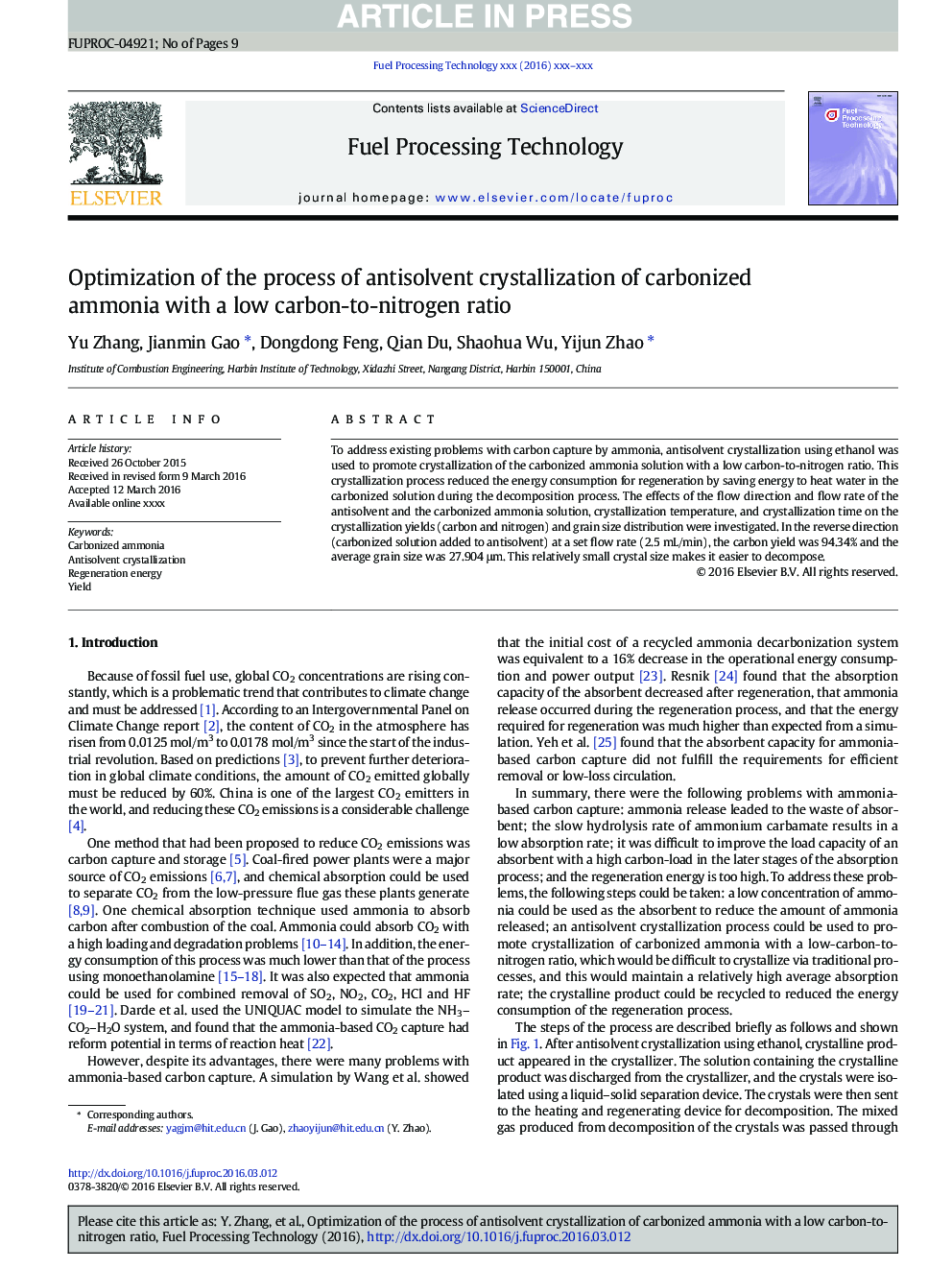| Article ID | Journal | Published Year | Pages | File Type |
|---|---|---|---|---|
| 4907136 | Fuel Processing Technology | 2017 | 9 Pages |
Abstract
To address existing problems with carbon capture by ammonia, antisolvent crystallization using ethanol was used to promote crystallization of the carbonized ammonia solution with a low carbon-to-nitrogen ratio. This crystallization process reduced the energy consumption for regeneration by saving energy to heat water in the carbonized solution during the decomposition process. The effects of the flow direction and flow rate of the antisolvent and the carbonized ammonia solution, crystallization temperature, and crystallization time on the crystallization yields (carbon and nitrogen) and grain size distribution were investigated. In the reverse direction (carbonized solution added to antisolvent) at a set flow rate (2.5 mL/min), the carbon yield was 94.34% and the average grain size was 27.904 μm. This relatively small crystal size makes it easier to decompose.
Related Topics
Physical Sciences and Engineering
Chemical Engineering
Chemical Engineering (General)
Authors
Yu Zhang, Jianmin Gao, Dongdong Feng, Qian Du, Shaohua Wu, Yijun Zhao,
